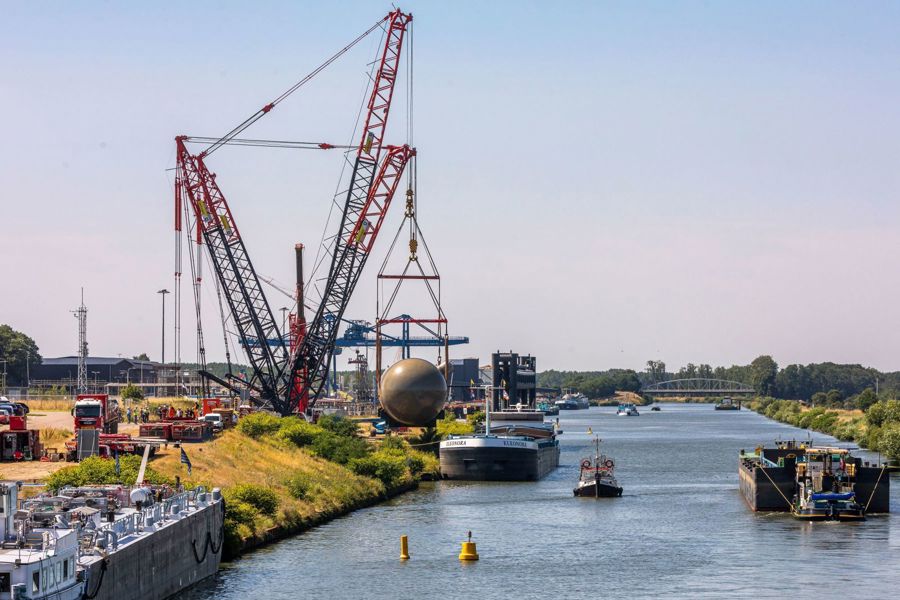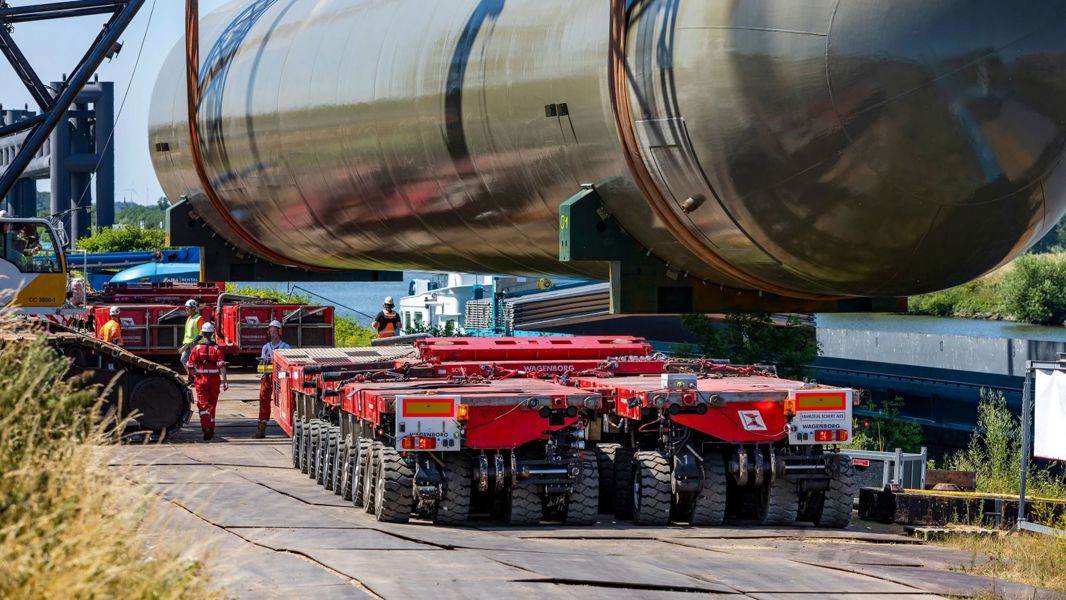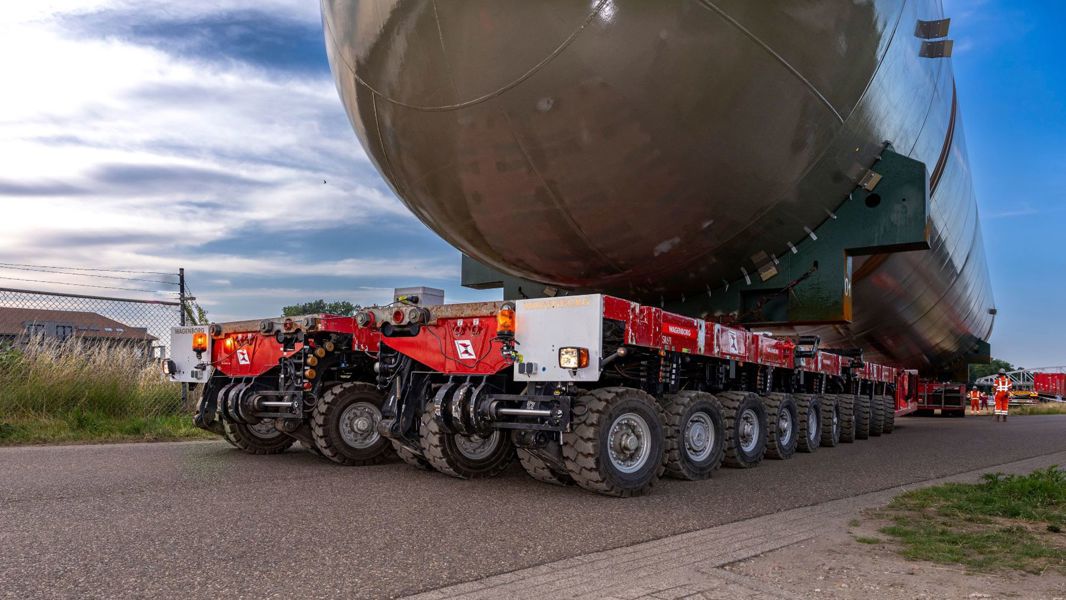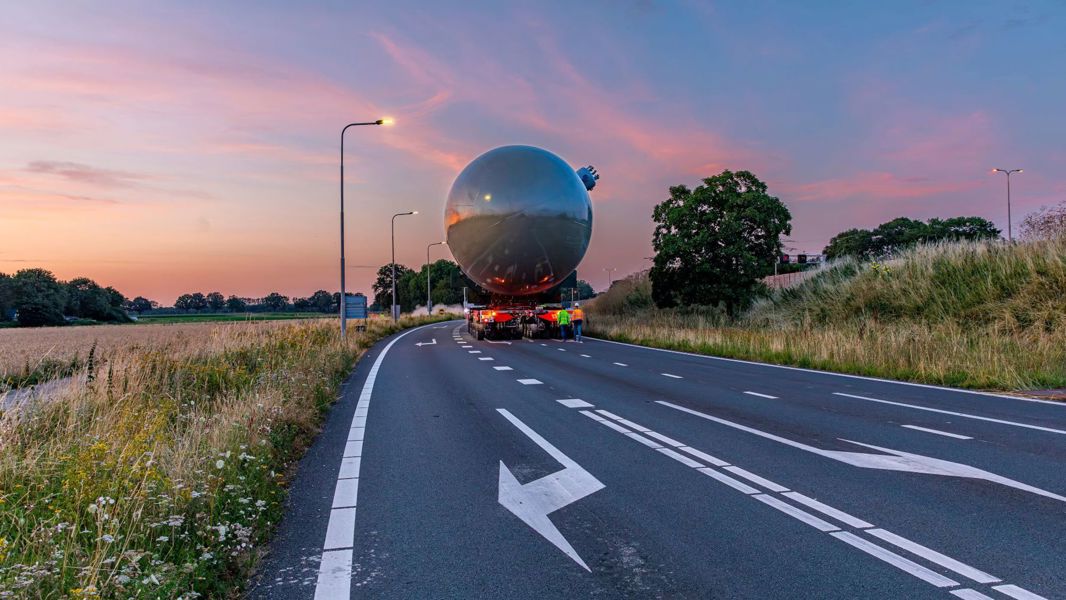
Mega duo on the move
Bullets
The steel storage tanks, known as 'bullets', were certainly colossal: 53 metres long, 8 metres wide and 8.5 metres high, each weighing 460 tonnes.
How do they get from the production site in Genk (B) to the Chemelot site in Geleen?


Last mile
Most of the journey from Genk to Limburg could be made by ship. As far as the port of Stein, to be precise. The biggest challenge was the final stretch on the public road to the Chemelot site. All in all, a challenging 'last mile' of around 4 kilometres.
This is where Wagenborg Nedlift's team of engineers and transport specialists came in.
Good preparation is....
Long before the colossal tanks were on their way, the Wagenborg Nedlift transport team was busy preparing the route from the port to the project site. The planned route had been used for heavy transport before, but a combination of length and dimensions like these bullets had never been seen before.
First, the team carefully mapped the entire route. Every curve and roundabout was precisely measured and every kerb, pole, traffic light or lamppost on the route to the project site at Chemelot was included in the transport plan. The transport engineers determined the right transport configuration: a dolly combination of 2 x 20 axle line SPMTs. Consultations were held with the relevant authorities, including the Department of Public Works. After all, to cross the A2 motorway, the convoy had to use the motorway exit and slip road, which meant that this important motorway had to be closed for a short time.


The time has come
Pictures: Peter van Geest
On a beautiful summer evening, the time had finally come: the first bullet had arrived by ship in Stein and everything was ready for the 'last mile'. The traffic furniture had been removed, curves and roundabouts had been fitted with wooden mats and (composite) plates, and the entire team was on standby. Two large 600-tonne crawler cranes had lifted the first bullet from the ship earlier in the day and loaded it onto the SPMTs. The journey through Stein and Urmond began around 8pm. The transport team skilfully manoeuvred the colossus through the streets, watched by local residents. What a spectacle! Around midnight, traffic on the A2 was stopped for the crossing, after which the transport continued on its way.
Once in Chemelot, there was one more obstacle to overcome: a pipe bridge. This was too low to cross by SPMT. So the bullet was jacked down and then manoeuvred under the pipe bridge using a skidding system. It was then jacked up again and loaded onto the SPMT. Now the final destination was in sight: the sand bed on which the bullets had to be positioned. To do this, the SPMT wheels were turned by 90 degrees, after which a jacking operation combined with turntables was used to place the bullet in exactly the right position on the sand bed. This whole heavy transport exercise was repeated with the second bullet in the following days.
Watch the project movies here
Project movie: Sitech Services
Transport movie: Wagenborg Nedlift
Ambitious infrastructure project contributes to Chemelot's sustainability ambitions
A good infrastructure is essential for Chemelot. This is why the company is working on making the transport of current raw materials cleaner, quieter and safer. And on the infrastructure needed for the transition to renewable raw materials, such as recycled waste and biomass. This project makes an important contribution to the necessary adaptation of the infrastructure and thus to the realisation of Chemelot's sustainability ambitions.


Sitech Services
Sitech Services is responsible for managing this project and is an experienced service provider on the Chemelot site. Sitech maintains the facilities with the expertise and specialists required for maximum performance and with the knowledge required for the sustainability transition to 2050. Our services include daily unplanned maintenance (maintenance), planned maintenance (turnarounds), (improvement) projects, consultancy, sourcing & supply chain and inspections. With our many years of experience at Chemelot, we are the partner for a sustainable, safe and competitive industry.
Read also:












